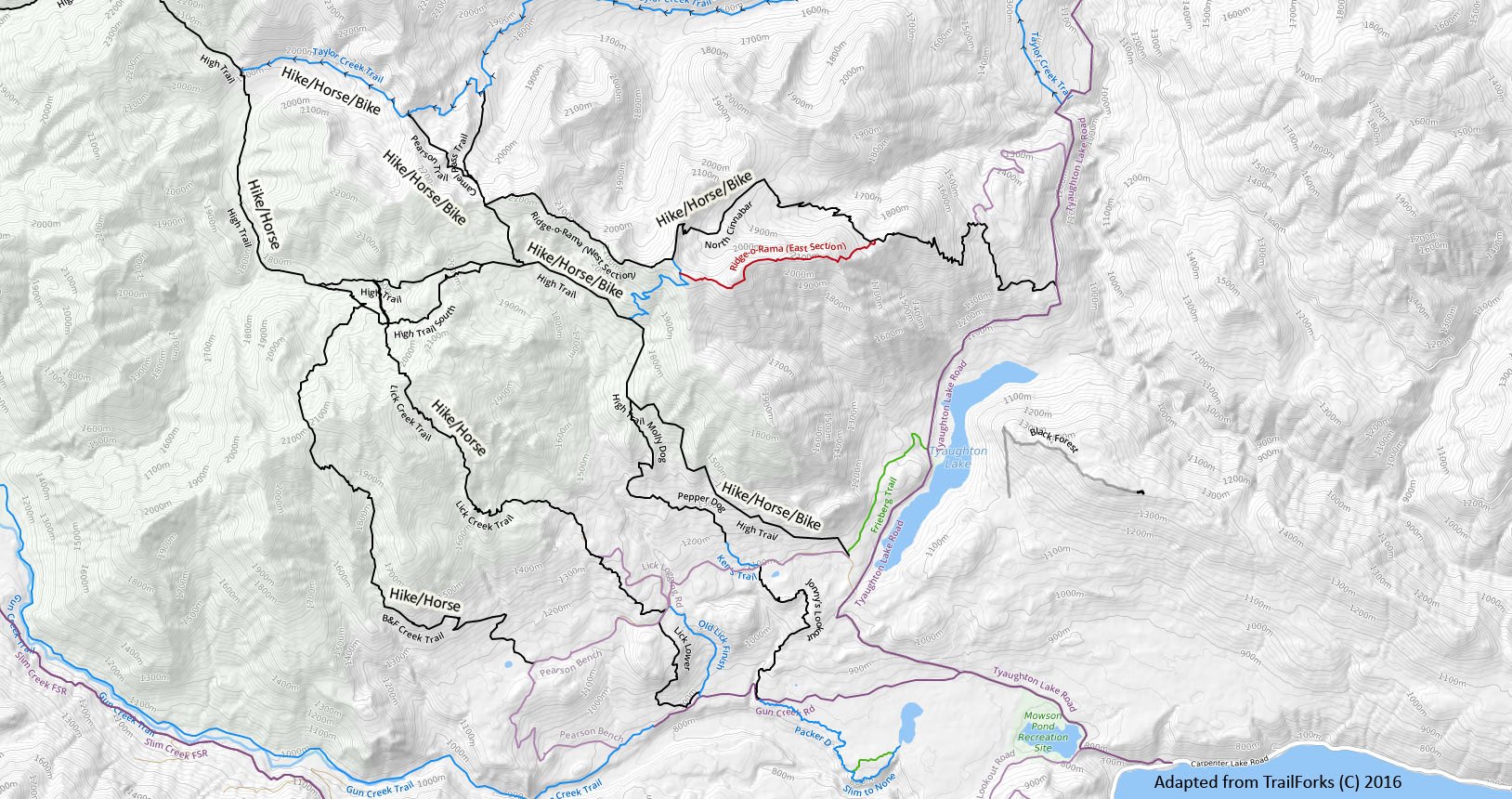Main Sections
South Chilcotin Mountain Park
South Chilcotin Mountains Park is located in the southwestern part of British Columbia and lies approximately 180 kilometres north of Vancouver, 100 kilometres southwest of Williams Lake and 80 kilometres of Lillooet. It is 56,796 hectares big and encompasses rolling mountains and alpine areas. In 2004 through the Lillooet Land and Resource Management plan, the Spruce Lake Protected Area was divided into three mining and tourism areas and the South Chilcotin Mountains Park. Four guide outfitters territories, seven traplines and range tenures for horses and cattle are all tenures included within the park. Other commercial tenures were changed to park use permits after the establishment of South Chilcotin Mountains Park. Management of the park includes the Park Act, the Park, Conservancy and Recreation Area Regulation, its management plan and procedures and policies of BC Parks.
South Chilcotin Mountains Park is highly important in the Provincial Protected Areas System for its ecological values and topographical and climatic variations. It is also of geological importance displaying a complex geological history with processes from many eras and well preserved Mesozoic Era marine fossils. The drier climate is created because the park is located on the lee side of the Coast Mountains. It protects its contained ecosystems namely the Central Chilcotin Ranges Ecosection and the Southern Chilcotin Ranges Ecosection. The park contains a unique and diverse vegetation cover as well as an abundance of wildlife including species like the California Bighorn Sheep, Cougar, Grey Wolf, Grizzly Bear, Mountain Goat and Black Bear. However, the park doesn't only have natural values it is also within the territory of three First Nations: the St'at'imc, Northern Secwepemc and Tsilhqot'in and many areas are therefore of cultural importance. Ranching, guide outfitting, hunting and tourism all have a long history of horse use and are important to South Chilcotin Mountains Park by creating many of the trails used by other recreational users as well. The rounded nature of the park makes the viewpoints easily accessible and a perfect setting for recreational activities. The trail system attracts many people and makes a variety of activities possible, with hiking and mountain biking being the most popular of those activities. South Chilcotin Mountains Park is also significant to research and education with its different topography, landforms, diversity of plant species and variety of wildlife.
The vision of South Chilcotin Mountains Park involves a diversity of healthy ecosystems and a secure ecological integrity. The wildlife populations are in good conditions and there are secure areas for species at risk. Visitors to the park experience a sense of adventure and wilderness while taking part in activities that will maintain the conservation values. The land is treated respectfully and users of the park present a strong sense of stewardship. Not only the land but also the cultural heritage is appreciated and respected.
Maintaining the natural diversity is a high priority for park management. Some actions include preventing invasive plants from developing, increasing the knowledge of the park's environment and insuring thriving and healthy wildlife populations. First Nations have interest in the park for traditional uses and cultural sites. BC Parks will keep consulting with First Nations to find common direction for future park management and ensure that the cultural information will be available to future generations.
The management plan wants to make sure that a remote experience inside the park is maintained and that the environment around the activities does not get damaged. User safety is another important objective of the plan. It is reached by ensuring visitors are prepared for their trip, increasing the number of rangers and defining park boundaries and trails more clear. A last important part of management is to continue to consult tenure holders and ensure their rights. To have a more detailed zoning plan it is important to identify main habitat areas for different wildlife species to know where recreational activities should be avoided.
The four important actions that management wants to carry out is to ensure the environment's conservation and that no wildlife is displaced due to badly placed recreational use of the park; to consult First Nations, tenure holders and other users and obtain their approval for important decisions; and to make sure user safety is maintained by having safe trails and visitors that are prepared for a backcountry experience with wildlife encounters.
Source: South Chilcotin Mountain Park Draft Management Plan
Issues:
- Incomplete management plan
- Clarification of main trails is missing
- No main trails map for users
- Lillooet LRMP direction not being implemented
- Wildlife direction within the park is not being guide by Lillooet LRMP guidelines
Goals:
- Complete and approve a management plan
- Install park rangers
- Charge access fee
- Implement Lillooet LRMP direction for park
- LRMP direction: maintain park use at 2004 levels until final park plan in place
Protected Areas
- Duffey Lake Park
- Marble Canyon Park
- Goldpan Park
- Bridge River Delta Park
- Seton-Portage Historic Park
- Yalakom Creek Park
- South Chilcotin Mountain Park
- Stein Valley Nlaka’pamux Heritage Park
- Skwaha Lake Ecological Reserve
- Skihist Park
- Skihist Ecological Reserve
- Gwyneth Lake Park
- French Bar Creek Park
- Fred Antoine Park
- Cerise Creek Park
- Grasslands in British Columbia

